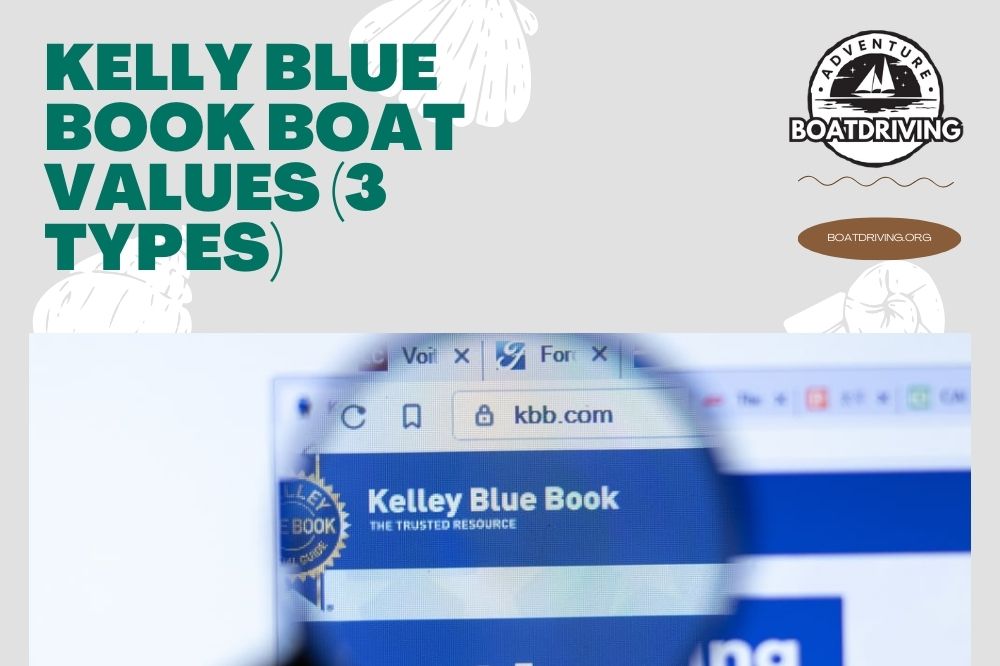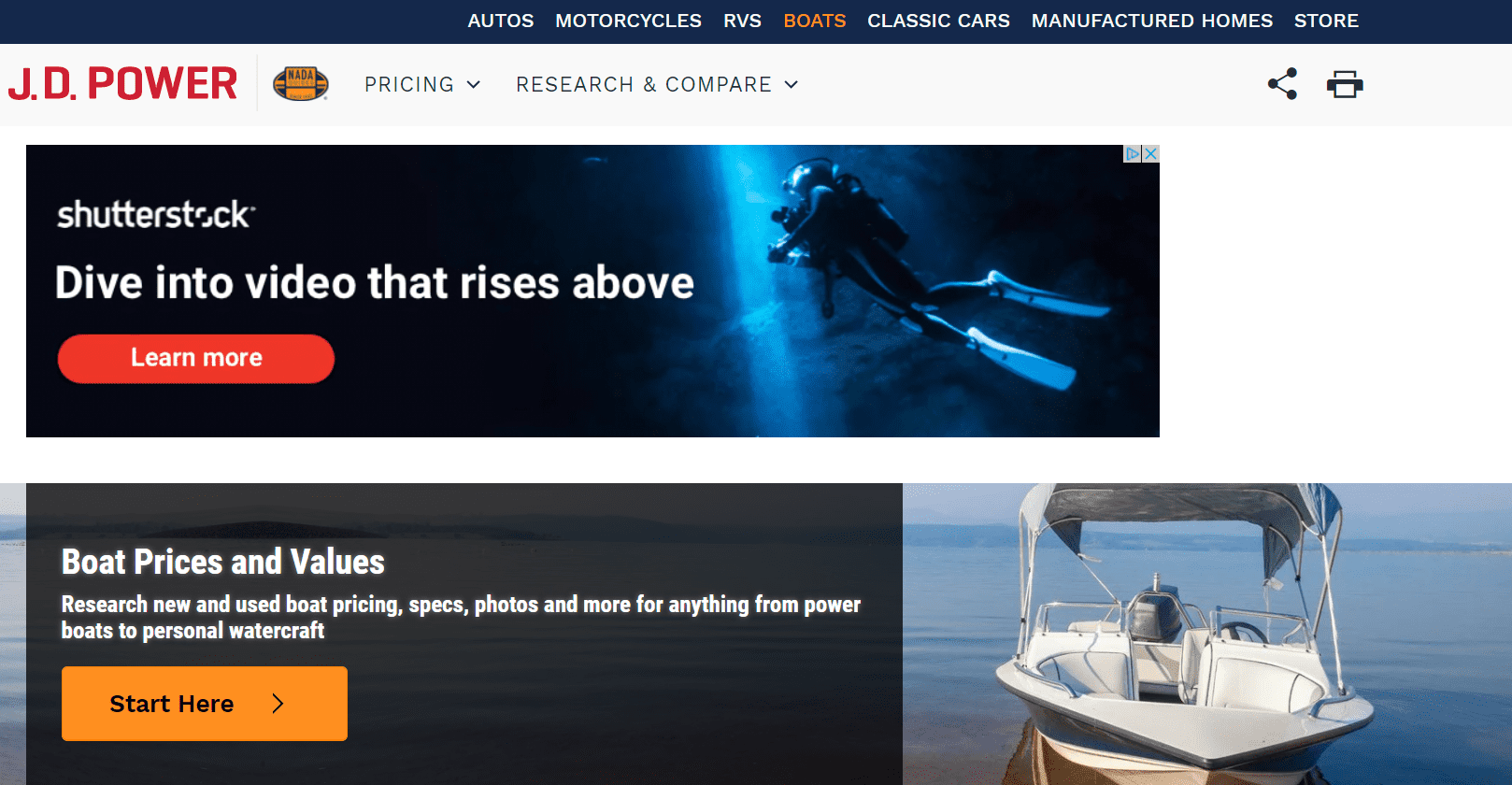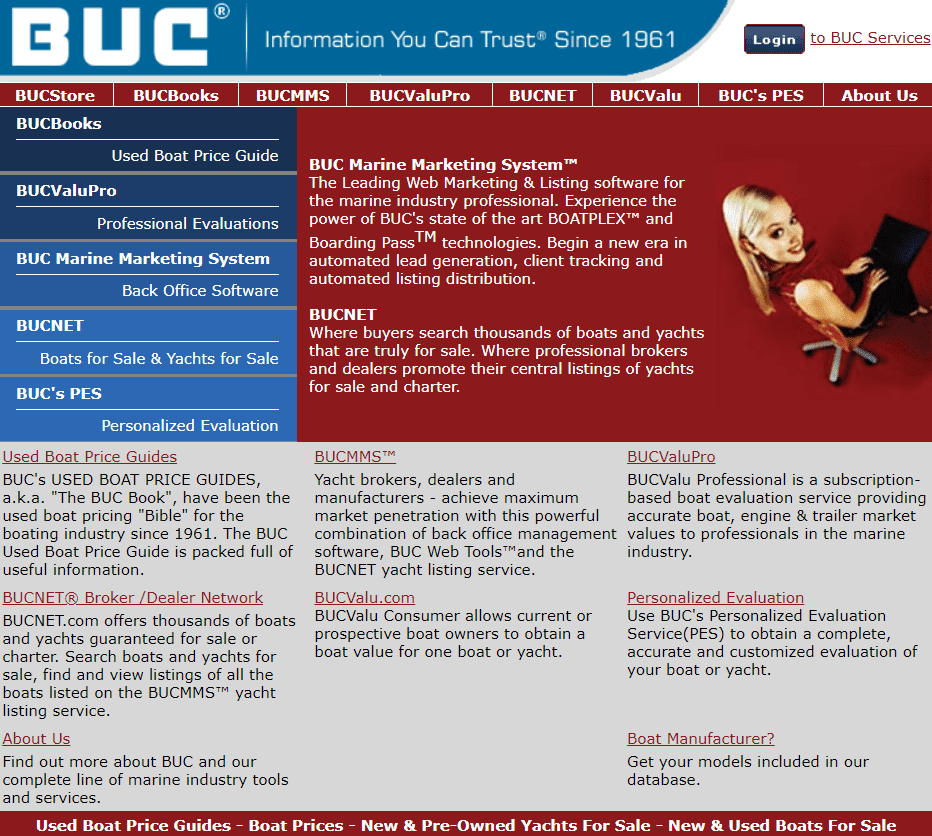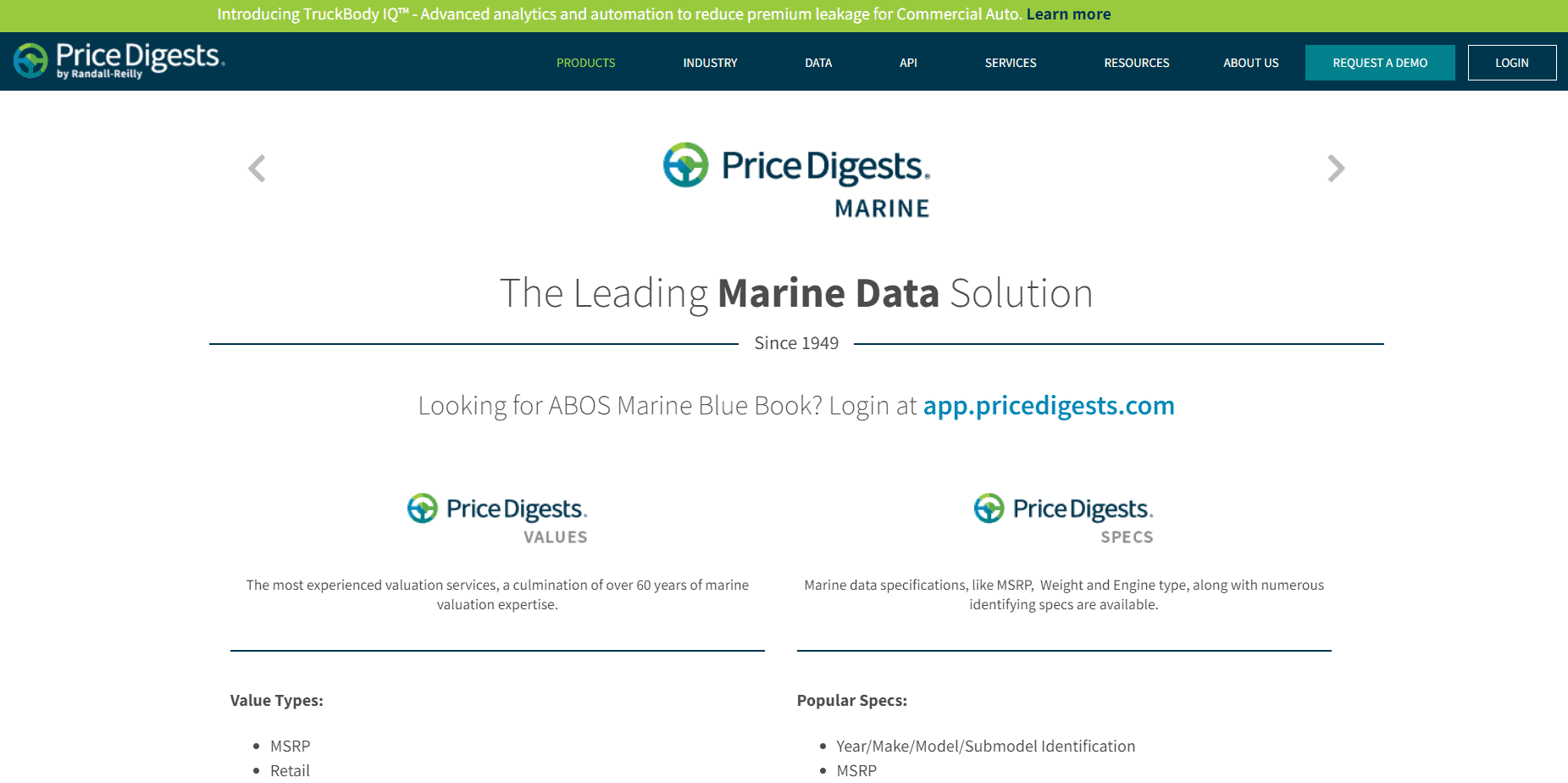Are you planning to buy a boat or sell your used one?
Knowing the value of a new or used boat ensures that you get a deal you are happy with.
Like a car or a house, a lot goes into determining a boat’s value. What makes it even more complicated is that numerous online resources claim to help you estimate the value of a boat. But, not all these sites provide accurate information.
A more reliable resource is the Kelly Blue Book Boat Values. As you will find out, there’s more than one type of Kelly Blue Book for Boats.
In this article, you will learn more about the Kelly Blue Book Boat Values, factors that go into determining the value of a boat, and ideas for getting an accurate estimate of a boat’s value.
Table of Contents
What Is the Kelly Blue Book?

The Kelley Blue Book is a company that reports the market value of new and used cars, personal watercraft, snowmobiles, and motorcycles.
The company first published its Blue Book in 1926, a publication that became the automotive standard guide book for determining the value of vehicles.
Kelley Blue Book uses transaction data of how much people are buying a vehicle and adjusts the figures for market conditions. The final figure is a fair purchase price and fair market range price.
The company provides information such as the car’s pre-owned price, listing price, and trade-in value for used cars. You can get information about the actual dealer price and the manufacturer’s suggested retail price for new cars.
Since its publication, people have used the term Kelley Blue Book Values to refer to any guide that provides the market price value of a vehicle.
Even those in the boating industry casually reference the Kelley Blue Book for boat values. But, the truth is the original Kelley Blue Book does not offer market price values for boats unless the vessel is a personal watercraft.
Some legitimate sites work like the KBB and can help you estimate the value of a boat. But unfortunately, many other sites and resources throw around terms like KBB, Kelley Blue Book, and Kelley Blue Book Boat Values put don’t offer valuable or accurate guides on determining your boat value.
For this reason, I strongly recommend that you carefully select the resources you use to find out the market price and value of a boat.
Later in this article, I will introduce you to three well-known Kelley Blue Book Boat Value guides. Dealers and brokers use these standard guides to evaluate and estimate boat values.
Keep in mind that these guides are not affiliated with the Kelley Blue Book company; these are simply the “Kelley Blue Books’’ for the boating industry. More on that later. For now, let’s take a look at some basic factors that influence the value of a boat.
What Determines the Value of A Boat?
A lot goes into determining the estimated value of a boat. The blue books for boats do a good job of compiling huge amounts of data to provide a rough estimate of a vessel’s market value.
But, there are so many other moving factors and variables that can make a boat worth more or less the estimates provided by the blue books for boats.
Let’s look at some factors that will influence the value of a boat to ensure that you get a good deal whether you are buying or selling a boat.
Age
Like a vehicle, a boat’s value decreases with time. Generally, an older boat that isn’t well-maintained will have a lower value than a well-kept oldie. Some boats do well with age, and their value increases with time. These go by names such as historic, antique, classic, and vintage boats. But age alone doesn’t boost a vessel’s value—its overall condition matters a lot.
Condition
The mechanical and physical conditions of a boat greatly influence the market price. A new model boat that hasn’t been properly maintained will have a lower value than an older boat with great maintenance.
Examining parts such as the boat’s motor and any signs of leaking on the exterior also helps value the vessel correctly. A clean and waxed boat gives a good first impression. A winterized boat with frequent oil changes and regular upkeep is more likely to attract a higher price.
Boat model and make
Some manufacturers have a good reputation in the boating industry for their high-quality vessels. These boats are durable and can stand up well to wear and tear and weather elements.
The boat’s size can also influence its market value. As a general rule, larger boats attract a higher price. But, a small boat made by a reputable manufacturer may cost more than a large one from a less well-known boat producer.
Accessories and add-ons
Add-ons and features such as updated satellite communication, electronics, and amenities will increase the desirability of a boat. But, keep in mind that accessories can go out of fashion quickly, so these alone might not be enough to increase a boat’s market value.
Next, let us take a look at the Kelly Blue Books used in the boating industry to determine a boat’s value.
Three Types of Kelley Blue Books for Boat Values
Determining the value of a boat is not easy. Brokers and dealers depend on massive aggregated data to arrive at rough market price estimates. In the end, how much you sell or buy a boat will depend on your negotiation skills and ability to strike a good deal.
Today, many online resources claim to help value boats. Some resources make a good effort and offer reasonable market price ranges. But, just because a site uses terms such as Kelley Blue Book Boat Values or KBB boat values doesn’t mean that the boat values they offer are accurate.
If you want to know a boat’s estimated value, it is best to use the industry guides that dealers and brokers use. These are casually referred to as Kelley Blue Books for Boats, but they are independent guides not affiliated with the Kelley Blue Book company.
The industry-specific guides for boat values are:
- The NADA Guides
- BUC used boat price guides
- ABSOS Marine Blue Book
You don’t need to invest in these books before selling or buying a boat. But, if necessary, you can ask your dealer or broker which of these guides they use and then compare it with any of the other two guides to get a clearer picture of a boat’s market price range.
Let’s look at each guide in detail.
1. NADA Guides
The National Automobile Dealer Association provides market values for cars, motorcycles, RVs, manufactured homes, and boats.
NADA arrives at estimated market prices for boats by aggregating monthly sales numbers from diverse sources such as private sales, dealer sales, and auction sales. They also review pricing, demand and supply trends, and consumer behaviour over time.
The NADA guides mostly provide market price values for small watercraft and boats. The guides aim to give 5 % to 10% more or less the average market price.
Some dealers have noted that the figures provided in the NADA Guide are slightly lower than the prevailing market price. Private party sales and transactions come closer to the market values offered by the NADA Guide’s average prices.
NADA admits that the dealer prices are usually slightly higher than the market value estimates they provide themselves. They also assert that in the end, the final price of a boat will depend on its condition and other factors such as accessories and add-ons. The local supply and demand trends for boats and the vessel’s history will also play a role in determining the price a boat would fetch.
Aside from these factors, the boat’s value will vary from one region to another. For example, a boat in coastal regions might have more wear and tear as it is used throughout the year than a boat in the northern region.
Still, a well-maintained boat in the coastal region might fetch a higher price than one in the northern region that is poorly maintained. An area with a large boat market might have more vessels to choose from, pushing the boat’s price lower.
2. BUC Used Boat Price Guide
The BUC Used Boat Price Guide, also known as the BUC Book, has a long history as a reference guide for boat values. Today, it is considered the bible for estimates on used waterborne vessels, including trailers, watercraft, yachts, and boats.
Like the other Kelley Blue Books for boats, the BUC boat values result from a compilation of large amounts of data and econometric forecasts. They compare data from the manufacturer, surveyor, dealer, and broker reports to arrive at market prices for used boats.
The BUC considers factors such as the boat’s condition, description, engine type, size and accessories, collecting this information from a wide network of brokers and dealers. They adjust these figures according to the prevailing economic conditions and apply econometric formulae to translate the raw data into boat values, published in the BUC Used Boat Price Guide.
A major difference between the BUC and other pricing guides is that the BUC divides the sales reports from dealers and brokers into different geographical regions in the USA and Canada. This additional step takes into consideration the price differences in the various locations.
The BUC Used Boat Price Guide was first published in 1961, starting with 5,000 boat value entries. Today, this particular Kelley Blue Book for Boats boasts more than 700,00 entries.
3. ABOS Marine Blue Book
The ABSOS Marine Blue Book was first published in 1949 and contained more than 300,000 boat value entries. Bankers, insurance companies, dealers, brokers, and surveyors have since used the ABSOS Blue Book to estimate the value of trailers, motors, and boats.
In the book, you will find comprehensive information about a boat’s year, make, model, weight, and load capacity. You will also discover the engine type, horsepower, hull material, hull length draft, and beam.
How To Get An Accurate Boat Value?
Accurate boat values are not easy to come by. The NADA guides, BUC guide, and ABSOS marine blue book are great and dependable resources. But, in the end, these are only guides. The true value of a boat you are selling or looking to buy may be slightly higher or lower than the boat value entries listed in these guides.
To get a better boat value, especially if you are buying or selling a used boat, I strongly recommend a pre-sale boat survey by a boat surveyor. A boat surveyor will perform a thorough visual inspection of the vessel in addition to using any of the three Kelley Blue Books for boats as a reference point. They will inspect the boat’s systems, deck superstructure, and hull, giving you a more accurate and current vessel
value.
The National Association of Marine Surveyors and the Society of Accredited Marine Surveyors are good resources to find local professional surveyors.
Online boat valuation sites don’t usually consider many private party transactions; they typically base their values on broker and dealer data.
A surveyor is particularly important if you want to sell your boat quickly and at a good price. They can identify some small cosmetic issues that you can fix to improve the condition before listing it. Prospective buyers will need a valuation report anyway, so conducting a pre-sale survey can help them submit their application and get financed faster, allowing them to sell their vessel faster.
Summary: Kelley Blue Book Boat Value
Like a car, getting the true value ensures that you get value for your money and vessel. Blue books serve as a reference guide for boat values. But, it is important to keep in mind that the original Kelley Blue Book doesn’t provide a valuation for boats. People use the term Kelly Blue Book Boat Values to legitimize their boat value metrics or refer to industry-specific blue books used by dealers and brokers to determine a boat’s value.




2013 Suntracker for sale with 60 Mercury motor